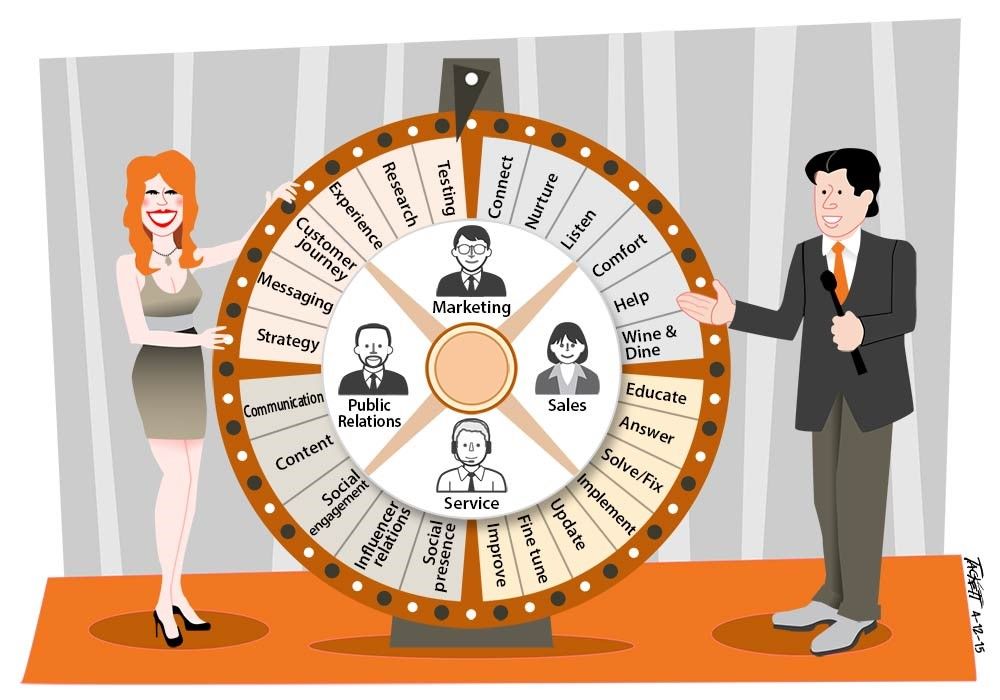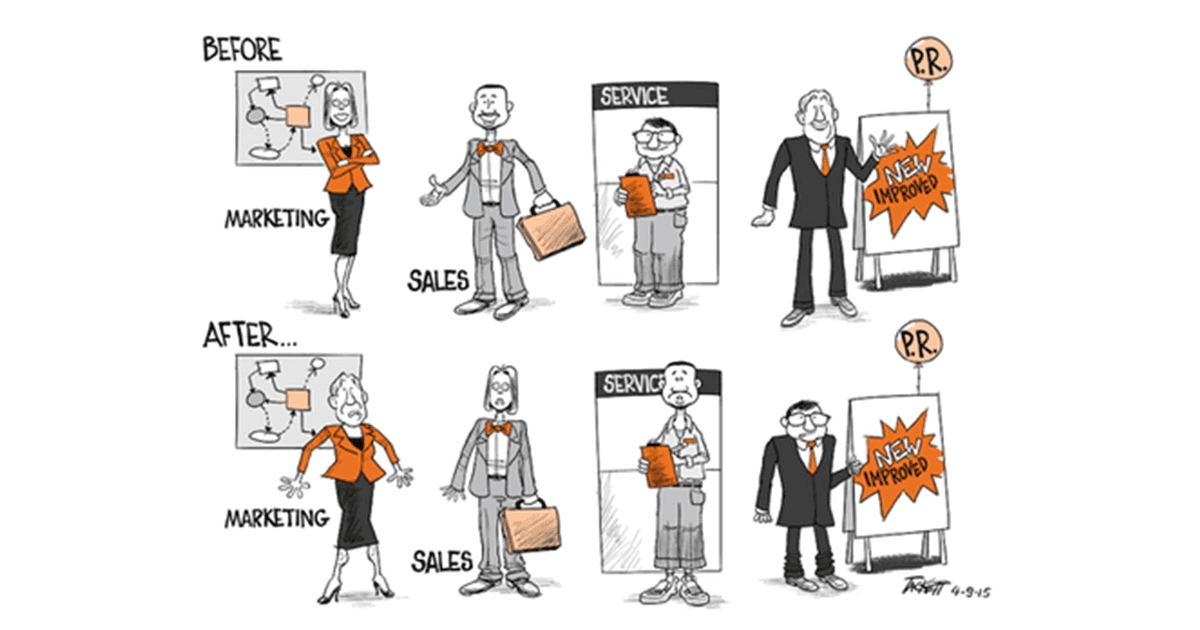Marketing is the new Sales, Sales is the new Customer Service team, and the Support team is where brands are built (or damaged).
With the "Go-To-Market" functions of PR/Communications, Marketing, Sales and Services/Support now all being connected by the fabric of the digital funnel and customer data, it's hard to keep track of the hand-off points. The lines between the teams have blurred, and no longer does Marketing end when a lead gets handed to sales.
The marketing department is now responsible for ROI; the sales team is engaging in more funnel hand-holding than closing; the customer service team is renamed "customer success team" and chartered with improving the companies reputation; and the PR/Comms team is shoveling content by the metric ton into the social media machine.
Let's look at this shift in greater detail.
Marketing
Today’s marketing team has been asked to shoulder an increasing share of the accountability for sales results – in fact, 73 percent of corporate marketers reported having a quota for marketing-sourced lead generation, as noted in the 2015 Demand Gen Report Benchmark Study. Marketing teams are being held accountable for the conversion of leads, cost per acquisition, cost per conversion — all kinds of metrics that are immediately related to performance and ROI.
Sales
The sales team now has to ensure a positive prospect experience. Whether a consumer is enjoying a trial period of a product, or whether they have already subscribed or consumed, the sales team is being asked to nurture the customer through their experience in the hope that they can be up-sold. Today’s savvy buyer is seeking more than an order-taker with whom to interact.
As a result, the prospect has become the “commander-in-chief” of the sales process. An IDC study found that in B2B purchase decisions, 93 percent of prospects have educated themselves on your offerings before they actually knock on your door. This means a detail-oriented sales rep needs to understand every nuance of the offering – or risk becoming a barrier to sales growth.
Today’s sales rep has to be a trusted advisor – a guide through the customer journey. To foster that trust, salespeople should make an effort to understand the prospect’s unique needs, and to demonstrate this enhanced knowledge through a demo or some other form of education and delivering value.
Customer Service(or Support)
Of course, the first line of contact for many consumers is customer service – whose role as traffic cop has been supplemented by a responsibility to protect the reputation of the company. A question-bearing consumer is holding the phone in one hand, while tapping out notes about the customer service experience, in real-time, to the social media universe (just ask Comcast what happens when such interactions go awry).
Ensuring a positive experience – sending away a caller with a solid path to understanding or resolution – makes customer service Ground Zero for the establishment of the company’s reputation and the character of the brand. In a sense, your customer service rep has just been promoted to “chief brand officer” – and is a linchpin that can make or break your company’s reputation (we know the buyer’s journey does not end with the sale).
Public Relations (or Communications)
Suddenly, the content and thought leadership skills of the PR practitioner have earned a premium at most companies – with their wordsmithing abilities ideally suited to today’s digital marketing explosion. These new foot soldiers on the marketing front lines are asked to connect the company to all types of consumer experiences and moments, across a variety of social media sites.
No longer is the ability to write a press release — or to speed-dial a Wall Street Journal reporter — the focus of a PR pro’s resume. It’s now essential that they use their communications powers to motivate people into engagement with your brand and company.
Influencer marketing is often the term you will hear used to describe this new form of “public relations.” It’s about getting people to care about your brand, share your brand, and interact with your brand.

One Customer Journey
Regardless of their positioning around the table, one thing remains true today, as it has in the past – a solid go-to-market plan, and good cross-departmental synergy between these functions is the best way to catalyze your personnel in the competition for mindshare and sales. A coordinated effort is what it takes today to drive new interest to your company and to ensure that today’s consumer is acknowledged – and rewarded – for engaging with you.
